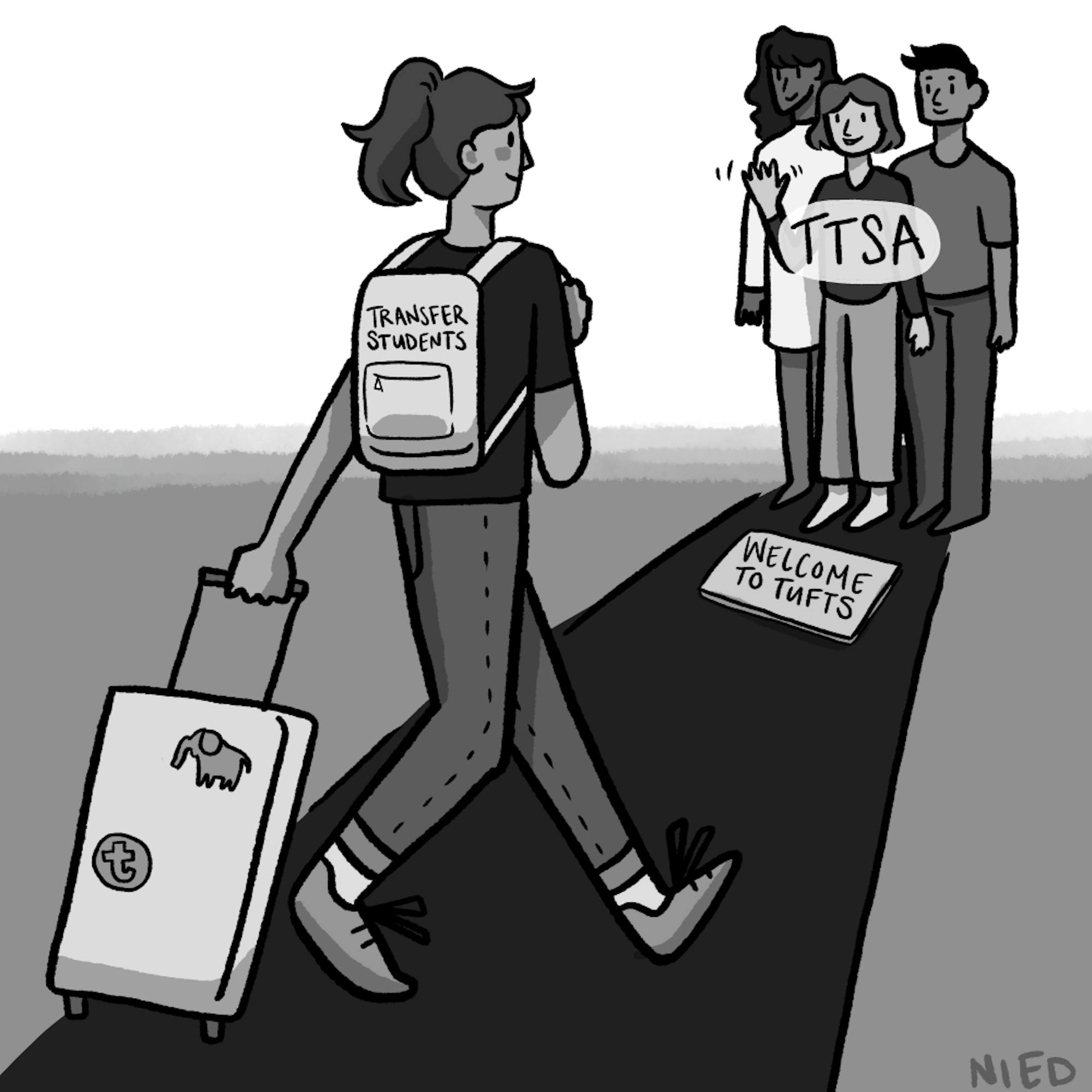The COVID-19 pandemic has brought about a lot of moving pieces — and for some, this meant moving to another school. Transfer students experience hurdles in moving universities, ensuring their course credits follow them, and ultimately succeeding academically and socially in their new institution. That’s where the Tufts Transfer Student Association comes in.
“We want to make transferring an easy and enjoyable process at Tufts and let people transition to being students in our university, without worrying about finding friends, taking the right classes or any of that stuff,” Tait Smith, Tufts Transfer Student Association president, said.
Smith, who had attended the University of Tulsa, had the intention of transferring the moment he stepped on his last campus.
“I decided to come to Tufts because my friend was an incoming freshman at the time and she would not shut up about Tufts,” Smith said.
While Smith knew Tufts was the school for him from the onset, for Carly Siciliano, vice president of Tufts Transfer Student Association, Tufts became a clearer choice after spending more time at her original school. She came from Northeastern University as a chemical engineering major and appreciated Tufts’ collaborative and open curriculum that would allow her to pursue both biomedical engineering and be on the pre-med track.
“I knew I would also be a successful pre-med at Tufts just by the amount of people that go here as a pre-med and the research and opportunities that people have at the school,” Siciliano said.
Transferring is more of a common practice than most may realize. During the 21st century, almost 60% of students attended multiple institutes, transferred and/or co-enrolled prior to graduating. Though transfer enrollment at public four year universities remained stable during the pandemic, overall transfer enrollment has decreased — understandably so, since the pandemic presented its own challenges during the transfer process.
“I had trouble because I had to get my high school transcripts and they weren’t open, and then I had to email every single teacher and get them to sign a PDF virtually,” Siciliano said. “It was just really complicated, and I had a lot of misinformation from my old school on the documentation that I didn't and did need, and all the offices were closed.”
Olivia King, ambassador of Tufts Transfer Student Association, who transferred before the pandemic, is hoping the group's work will help normalize the transfer process.
“It was something that I got a lot of backlash for and I wanted to make the experience less taboo in a way. I had to convince so many people that I knew what I was doing, or that I had a gut feeling about transferring,” King wrote in an email to the Daily.
According to Smith, the club was born out of a need to improve the transfer process. Now, the Tufts Transfer Student Association is working to strengthen ties with the university to improve pathways for transfer students.
“I was kind of annoyed at Tufts on how they dealt with transferring during the pandemic, so essentially what happened is I just made a post on Facebook asking people who might want to be on the e-board,” Smith said.
Smith has since recruited Siciliano and King, and is looking to attract members out of the 40–50 students who transfer to Tufts each year.
This partnership will create a pipeline for cultivating a sense of community and belonging for newcomers. It hopes to help students avoid transfer shock through student engagement.
King also wants to maintain support and recognize the transfer student process.
“Transfers are a slight focus during orientation, but after that week, we are dropped off the radar. We want to change that,” King wrote. “Personally, I also feel that having a club designed for a certain group validates that experience and that transition, rather than having it be a looked down upon decision.”
In pursuit of creating a support system, the club has even started a GroupMe among transfer students, where e-board members moderate and answer any troubles, including that of housing.
“Someone said they got a message that their on-campus housing was an error so we’re trying to make that process easier for them, because a lot of them are struggling to find off-campus housing,” Siciliano said in early August.
The club is also hoping to host social events, giveaways and question and answer sessions with prospective students on platforms like Instagram and Reddit. Throughout these events, Smith strives to present an accurate representation of the Tufts experience.
“We don't want to lie — we want it to be a good fit for them,” Smith said.
In regards to working with the university, the club is seeking to create a large transfer voice in school decisions. According to King, Tufts Transfer Student Association is trying to have a representative in the Tufts Community Union Senate to represent transfer students.
This year, the American Council on Education’s National Task Force on the Transfer and Award of Credit issued a report highlighting areas of improvement for transfer students. The report calls for adjusting barriers in accessing transcripts, increasing transparency around what credit will transfer, improving resources for quality advising and more. One of the biggest components that the club hopes to address is the ability for transfer students to take gap years and receive guaranteed housing.
When it comes to the transfer process, the Tufts Transfer Student Association is the link in the chain.
As King wrote, “[We] hope that students looking to transfer can see that Tufts and its students provide support for them from the day they transfer to even beyond graduation.”






